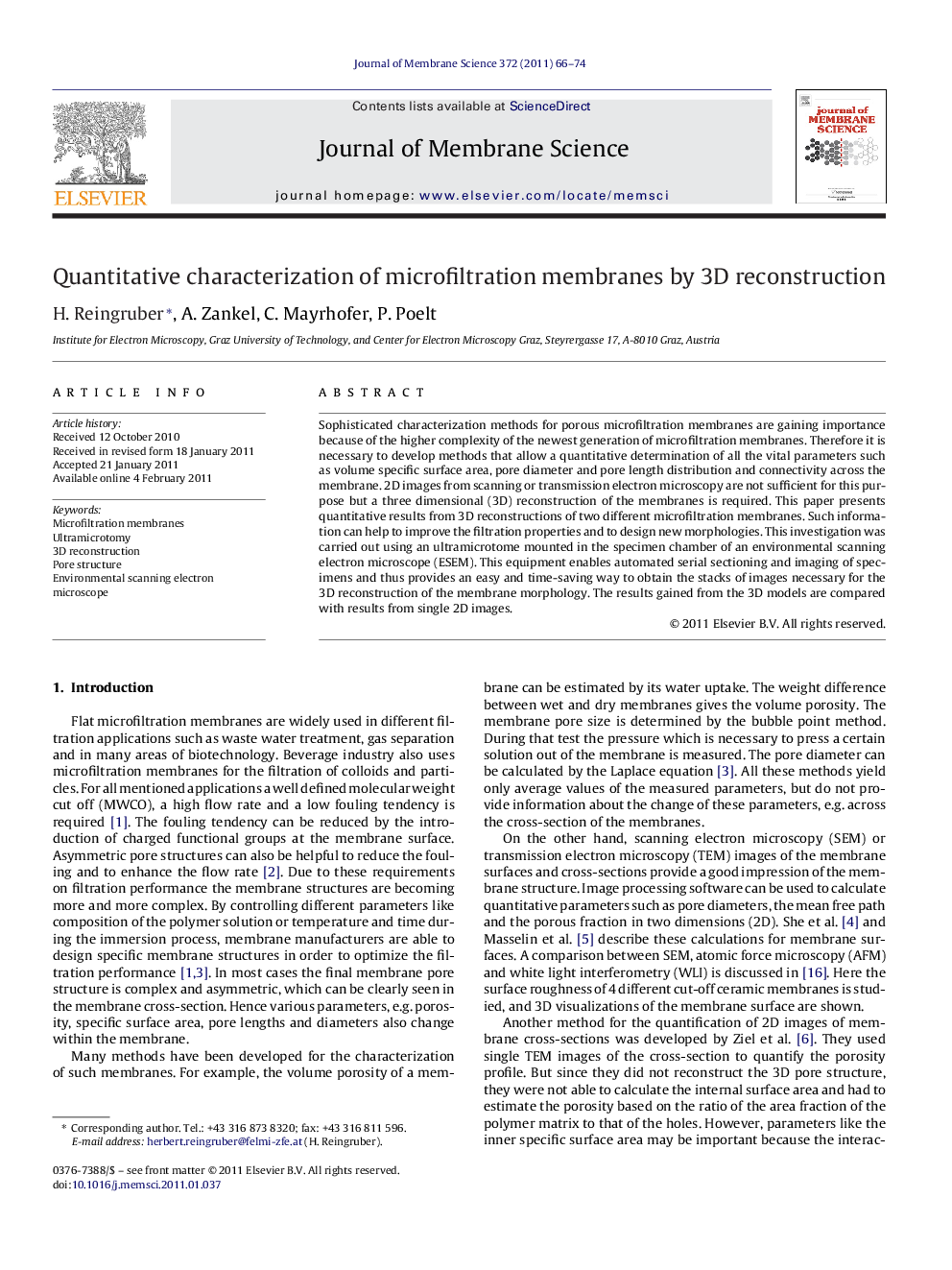| Article ID | Journal | Published Year | Pages | File Type |
|---|---|---|---|---|
| 635451 | Journal of Membrane Science | 2011 | 9 Pages |
Sophisticated characterization methods for porous microfiltration membranes are gaining importance because of the higher complexity of the newest generation of microfiltration membranes. Therefore it is necessary to develop methods that allow a quantitative determination of all the vital parameters such as volume specific surface area, pore diameter and pore length distribution and connectivity across the membrane. 2D images from scanning or transmission electron microscopy are not sufficient for this purpose but a three dimensional (3D) reconstruction of the membranes is required. This paper presents quantitative results from 3D reconstructions of two different microfiltration membranes. Such information can help to improve the filtration properties and to design new morphologies. This investigation was carried out using an ultramicrotome mounted in the specimen chamber of an environmental scanning electron microscope (ESEM). This equipment enables automated serial sectioning and imaging of specimens and thus provides an easy and time-saving way to obtain the stacks of images necessary for the 3D reconstruction of the membrane morphology. The results gained from the 3D models are compared with results from single 2D images.
Research highlights► Serial sectioning and imaging of the cross-section of three different micro filtration membranes. ► Complete 3D reconstruction of three micro filtration membranes. ► Spatially resolved calculation of specific surface area, pore connectivity and pore diameters. ► Maxima of the surface area and the pore connectivity are found in the separation layer. ► Results from the 3D reconstruction are comparable with results from 2D images.
